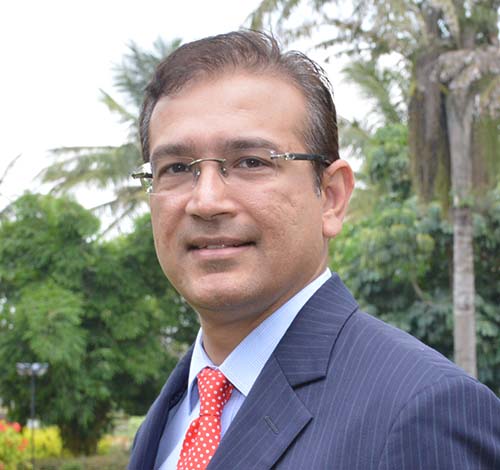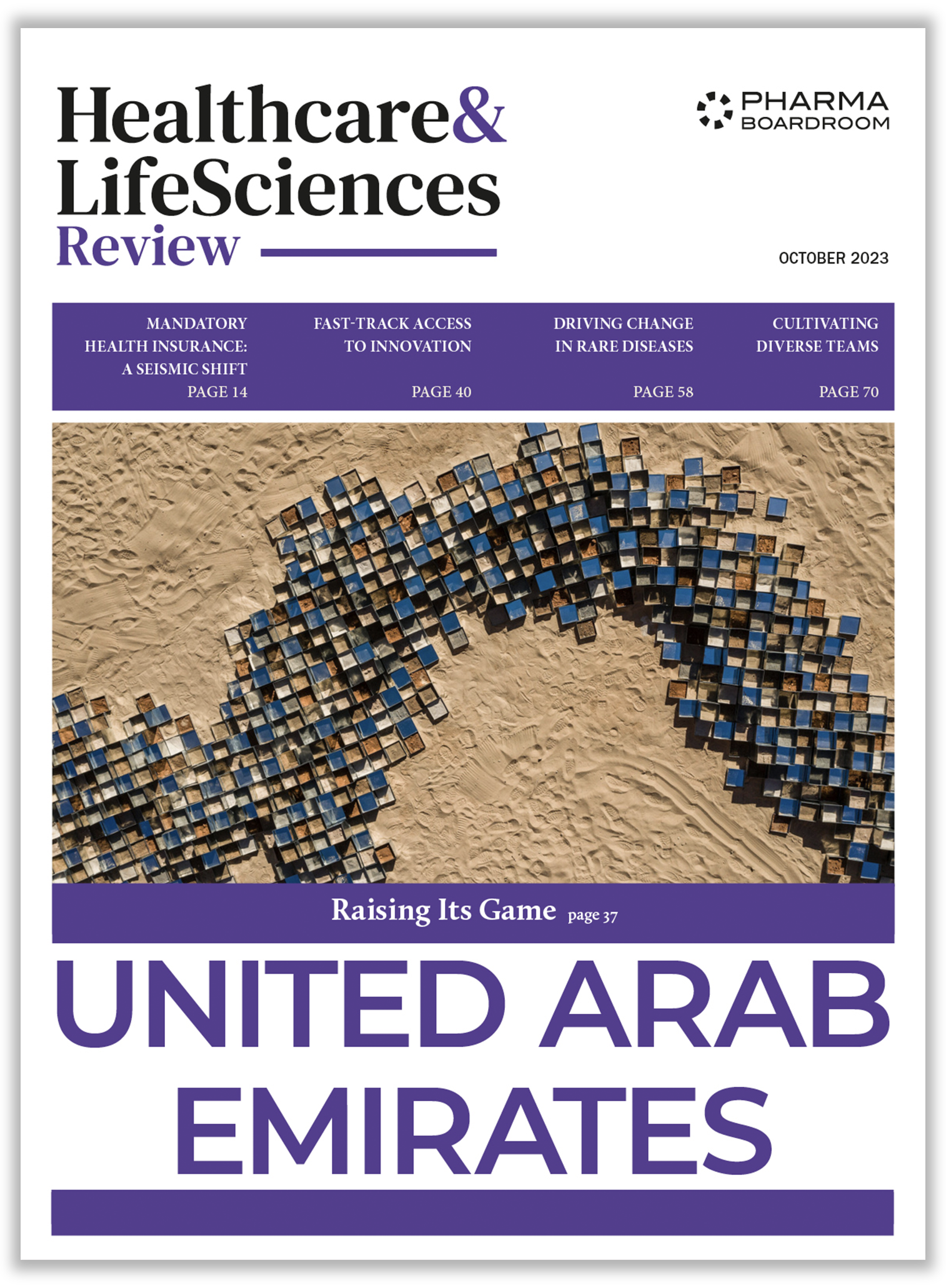Murtaza Khorakiwala, managing director of Wockhardt,
discusses the company’s vast international expertise in the manufacturing of pharmaceuticals and biopharmaceutical formulations in their 12 US FDA, UK MHRA and EMA compliant manufacturing facilities in India, as well as the out-licensing of its products into other regions to capture and penetrate new markets.
Something striking when you look at Wockhardt is its financial results. You must have pursued quite an aggressive strategy which ultimately led to substantial revenues. Can you provide our international readers with a brief overview of your strategy?
Our strategy is related to the history of the organization itself. In the early 1990s, we were a local company for which 80 to 90 percent of our business was from India. In 2002 we started the process of globalization which resulted in 70 percent of our businesses being outside India today. We acquired companies in France, two in the UK, one in Ireland and we have one in the US, too. As a result of this expansion, we became very active in terms of M&A up to the point of reaching the current status of a multinational company. Secondly, we were by large a branded drug generic company in the beginning and from a research point of view we added two areas of focus – biotechnology and biosimilars on the one hand, and chemical entities on the other. Furthermore, our business model is moving from a pure generic company to a more innovative model.
To what extent do you believe companies should develop their portfolio outside of the generic industry?
The level of competition determines the type of opportunities you have in the market. Wherever you have high level of competitiveness it will affect your margins as the situation today is slightly different from what it used to be ten years ago. Even if, to a large extent, opportunities for the generic market are still in the US, it is not enough to have a sustainable competitive advantage over a long period of time. The reason for this is twofold, because of the competitive intensity on the one hand and because of companies in India will fight for the US market.
We have acquired biosimilars as we have the molecules and not so many companies are willing to invest in them. At the end of the day, it is a high-risk, high-returns view as companies have a lot of operations to carry out in order to be competitive. Imagine if there are 20 companies in the generics space, and five out of them are willing to invest in the biosimilar or NCIs space. Every molecule is unique so you are unlikely to have many companies with the same model.
You have been in your current role for the past 10 years. In terms of organizational structure what do you identify as they key structural changes to ensure a company performs at its best when transitioning from local to multinational?
At an organizational level we have to understand which are the key elements on the corporate level that we need to manage from India, while also allowing the local organization in the UK or Ireland to develop their own infrastructure. Some of the corporate functions that we manage from here include finances and HR. The organization culture within the company is also something that we would like the headquarters to play an important role in, as it is important to identify with one single company, one alignment and one way of thinking.
HR, for instance, is crucial when it comes to aligning every employee to the same corporate culture of the company – we want to convey a sense of identity. From a business point of view, however, sales and marketing have to be managed locally as these are areas closest to consumers. The US Food and Drug Administration Agency (FDA) is putting a lot of emphasis on quality and compliance of products., meaning that it is fundamental that compliance teams across the affiliates ensue that the manufacturing quality standards are kept. To this purpose we have a quality watch-dog organization in every facility and we are harmonizing the process quality standardization across our affiliates.
Speaking of global manufacturing, what are the lessons you have learned and to what extent do you reckon rationalization of activities is needed, especially in the US?
One of the big differences between a multinational company like MSD, for instance, and us is that they produce branded drugs where we only focus on generics. In the generic industry, companies produce many more products than in the branded industry meaning that you need big facilities to cater these needs. Also, some are capsules, some are injectables, some are tablets and we need to have many plants as well to manufacture this diverse portfolio.
Besides, not every regulatory agency’s marketing approval is valid for any country. If I want to sell a drug in Europe I need the EMA’s approval, in the US the FDA’s approval and if I want to sell it in emerging markets I need each country’s approval. For this reason, because there is no harmonization across the global regulatory framework in the pharmaceutical industry, every company needs so many approvals to market their products in different countries. I reckon we have the right amount of manufacturing plants worldwide.
Sometimes it is good to have slightly more capacity than you need because you can take advantage of growth opportunities. Because of some of the issues we had with the regulatory agency in the US, some facilities are currently underutilized. If you see how manufacturing is evolving over time, what the FDA is requesting is more reliability and more consistency.
What are your key markets today and what do they represent for the Wockhardt’s portfolio?
The Indian market still accounts for about 30-35 percent of the global business, the European market is another 35 percent, US is approximately 20 percent and emerging markets is about 10 percent. Going forward, as our US regulatory issues get resolved, the US presence in our overall market will increase up to 30 percent or 40 percent in the next three to five years.
What makes the US an appealing market and what are the challenges?
Firstly, the US is a big market in terms of value. Secondly, the generic market in the US is also the largest market comparing to any other generic market. In the last 15 years, companies in India have penetrated US generic market and have been very successful in doing so. Indian companies have 25 percent of the US generic market share. This means that companies from India have 25 percent off the most competitive and very difficult market. It is fundamental to be able to compete in the largest generic market in the world and getting that market share.
From an Indian pharmaceutical perspective and as a country we have shown a very high degree of capability to achieve such market share so it is very good indication for other Indian companies. A question that I have asked myself is where do we go from here? I ascertained whether it was better growing to 45-55 percent or entering other areas as well – such as the development of new molecules, biosimilars and biotechnology. I believe this is the next wave of the Indian pharma industry in the USA.
What kind of treatment did you receive in the US when you entered the US market?
Having acquired a US company so we were treated like any other company. From a regulatory point of view, the FDA has increased its scrutiny on all Indian manufacturers in the last 5 years. They control it far more severely that what we have seen in the past. Maybe after the Ranbaxy episode, the mindset of the FDA changed as far as Indian pharmaceutical companies are concerned and over the last 5 years we have seen a very different approach of the FDA. One mistake, everyone pays. Indian pharma is going through that phase and we have to come out of it, make an effort to go to another level. Many Indian businesses are affected because of this increasingly rigid approach of the FDA. Unless we come out of it fully, to a certain extent our business will still be affected.
You currently have five antibiotics in the pipeline in Phase II and III. Why the choice of antibiotics?
We have been doing research on antibiotics in the past 25 years. Today in the world there is an antibiotic crisis, better known as antimicrobial resistance (AMR). All over the world governments have come up with policies aimed at incentivizing companies to innovate and come up with new molecules that address AMR. It is becoming a very critical problem globally. What has happened over the last 20 years is that large MNCs have reduced the innovation on antibiotics. On the one hand, new antibiotics are not getting launched into the market, and on the other hand organisms are mutating and becoming resistant to the current antibiotic treatments. In the US there is a program called Qualified Infectious Disease Product (QIDP) giving, among other things, patent exclusivity to companies for a longer period of time, reducing clinical trials that are required and lowering the product cost of getting the product to the market. We have five new molecules, and all of them have QIDP status meaning it satisfies unmet medical needs in the US.
Many Indian companies out-license the final stages of the clinical trials. Is this something Wockhardt is considering doing or will you go till the end of the process?
We currently have three molecules in the US and for one of them we are looking at partnerships, out-licensing or having some kind of business alliance with the MNC company. However, even for this molecule we have reached phase II and we would like to partner for phase III, perhaps in the US or EU market. Once we get the full results of Phase II, we will start sharing the interest of partnership for phase III.
When we look at your strategy today, we see that you had a bumpy road with the UK and the US, while you have done slightly better in some other European and emerging markets. What is this due to?
From a strategy point of view, we have always been the same. The reason why we had some downs in the US market is because of the regulatory issue I mentioned earlier which affected the revenues of the company for the last three years. We are pursuing existing partnership approaches in most of the emerging markets.
The potential to become bigger and faster is there. The emerging market potential is huge and as the time goes by we feel it more and more. One of the area we pursue in the emerging market is our biotechnology portfolio. We have the biosimilars, and we are very well positioned in insulin. Also in those blocks there is not huge competition. Maybe there are three to five companies globally present in that space, so this is another area we have identified, as the global insulin market accounts for USD 20 million.
We had a conversation with the CEO of Roche some time ago, who mentioned that it is fundamental to work together and better understand how pharmaceutical companies can complement each other in a transparent way. At Wockhardt, what is your partnership strategy?
We can look at partnerships in various ways: we are mainly looking for partnerships in the phase III of the clinical trial and marketing for one of the main molecules which I mentioned earlier. For the other 2 molecules, in countries where we do not have direct presence, we would be looking at some kind of partnerships or alliance in China or Japan and such emerging markets. Furthermore, our more emerging market business developments are also based on alliances and partnerships, as we recognize the importance of it.







